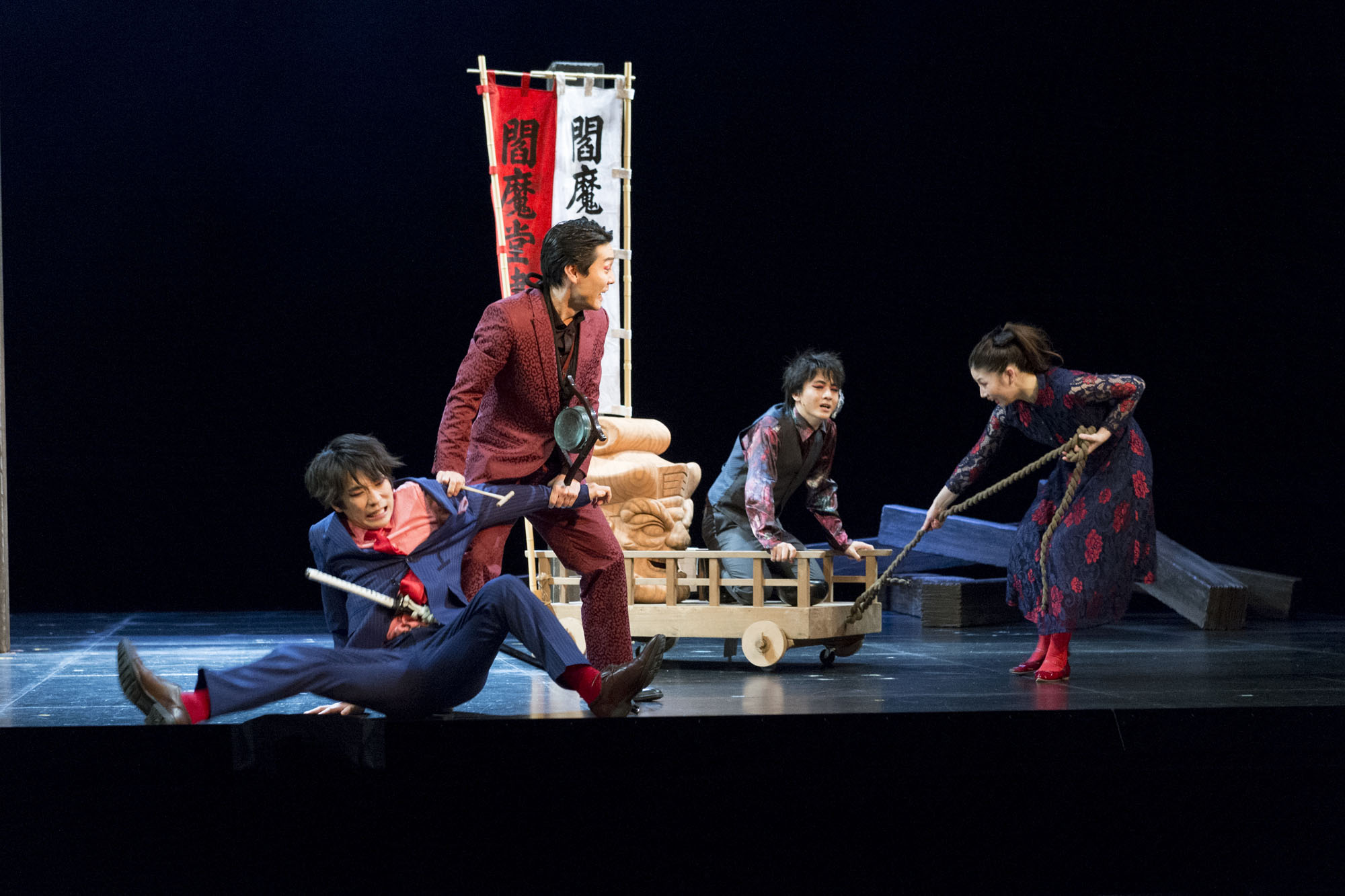For many people, the mention of kabuki brings to mind images of exaggerated makeup on actors' white-painted faces, beautiful kimono costumes and colorful sets with dramatic backdrops.
Then there are the distinctive standardized movements; classic poses (mie) expressing certain emotions; the precisely choreographed fights and swordplay (tachimawari); and styles of acting (kata), which are passed down through the generations of each family of performers.
In contrast, few people have likely heard of the Kinoshita-Kabuki company founded in 2006 in Kyoto, birthplace of the traditional performing art some four centuries ago.



